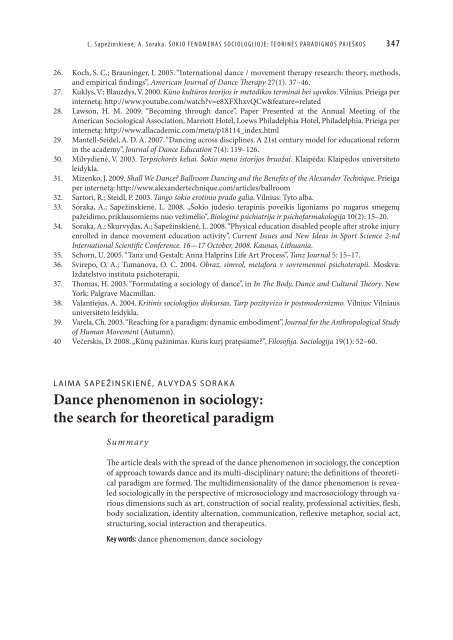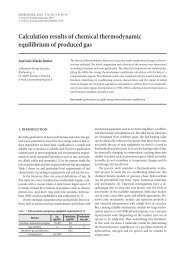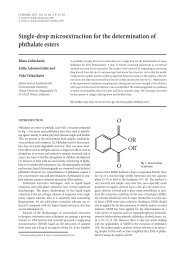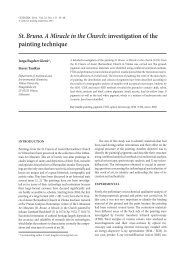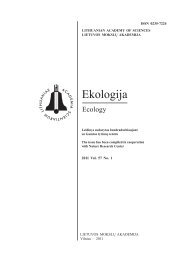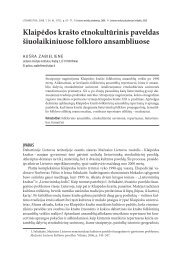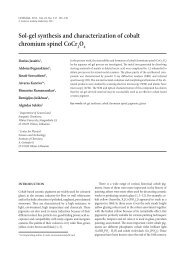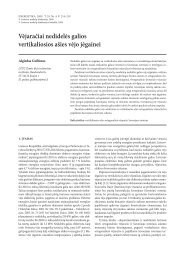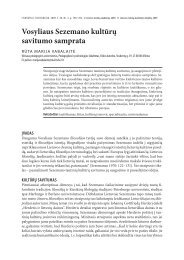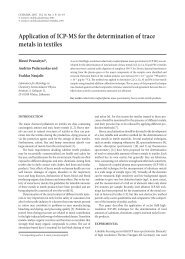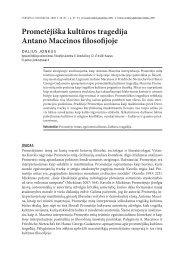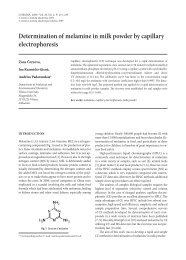Šokio fenomenas sociologijoje - Lietuvos mokslų akademijos ...
Šokio fenomenas sociologijoje - Lietuvos mokslų akademijos ...
Šokio fenomenas sociologijoje - Lietuvos mokslų akademijos ...
Create successful ePaper yourself
Turn your PDF publications into a flip-book with our unique Google optimized e-Paper software.
L. Sapežinskienė, A. Soraka. <strong>Šokio</strong> <strong>fenomenas</strong> <strong>sociologijoje</strong>: teorinės paradigmos paieškos<br />
347<br />
26. Koch, S. C.; Brauninger, I. 2005. “International dance / movement therapy research: theory, methods,<br />
and empirical findings”, American Journal of Dance Therapy 27(1). 37–46.<br />
27. Kuklys, V.; Blauzdys, V. 2000. Kūno kultūros teorijos ir metodikos terminai bei sąvokos. Vilnius. Prieiga per<br />
internetą: http://www.youtube.com/watch?v=e8XFXhxvQCw&feature=related<br />
28. Lawson, H. M. 2009. “Becoming through dance”, Paper Presented at the Annual Meeting of the<br />
American Sociological Association, Marriott Hotel, Loews Philadelphia Hotel, Philadelphia. Prieiga per<br />
internetą: http://www.allacademic.com/meta/p18114_index.html<br />
29. Mantell-Seidel, A. D. A. 2007. “Dancing across disciplines. A 21st century model for educational reform<br />
in the academy”, Journal of Dance Education 7(4): 119–126.<br />
30. Milvydienė, V. 2003. Terpsichorės keliai. <strong>Šokio</strong> meno istorijos bruožai. Klaipėda: Klaipėdos universiteto<br />
leidykla.<br />
31. Mizenko, J. 2009. Shall We Dance? Ballroom Dancing and the Benefits of the Alexander Technique. Prieiga<br />
per internetą: http://www.alexandertechnique.com/articles/ballroom<br />
32. Sartori, R.; Steidl, P. 2003. Tango šokio erotinio prado galia. Vilnius: Tyto alba.<br />
33. Soraka, A.; Sapežinskienė, L. 2008. „<strong>Šokio</strong> judesio terapinis poveikis ligoniams po nugaros smegenų<br />
pažeidimo, priklausomiems nuo vežimėlio“, Biologinė psichiatrija ir psichofarmakologija 10(2): 15–20.<br />
34. Soraka, A.; Skurvydas, A.; Sapežinskienė, L. 2008. “Physical education disabled people after stroke injury<br />
enrolled in dance movement education activity”, Current issues and new ideas in sport science 2-nd<br />
International Scientific Conference. 16—17 October, 2008. Kaunas, Lithuania.<br />
35. Schorn, U. 2005. “Tanz und Gestalt: Anna Halprins Life Art Process”, Tanz Journal 5: 15–17.<br />
36. Svirepo, O. A.; Tumanova, O. C. 2004. Obraz, simvol, metafora v sovremennoi psichoterapii. Moskva:<br />
Izdatelstvo instituta psichoterapii.<br />
37. Thomas, H. 2003. “Formulating a sociology of dance”, in In The Body, Dance and Cultural Theory. New<br />
York: Palgrave Macmillan.<br />
38. Valantiejus, A. 2004. Kritinis sociologijos diskursas. Tarp pozityvizo ir postmodernizmo. Vilnius: Vilniaus<br />
universiteto leidykla.<br />
39. Varela, Ch. 2003. “Reaching for a paradigm: dynamic embodiment”, Journal for the Anthropological Study<br />
of Human Movement (Autumn).<br />
40 Večerskis, D. 2008. „Kūnų pažinimas. Kuris kurį pratęsiame?“, Filosofija. Sociologija 19(1): 52–60.<br />
laima sapežinskienė, Alvydas Soraka<br />
Dance phenomenon in sociology:<br />
the search for theoretical paradigm<br />
Summary<br />
The article deals with the spread of the dance phenomenon in sociology, the conception<br />
of approach towards dance and its multi-disciplinary nature; the definitions of theoretical<br />
paradigm are formed. The multidimensionality of the dance phenomenon is revealed<br />
sociologically in the perspective of microsociology and macrosociology through various<br />
dimensions such as art, construction of social reality, professional activities, flesh,<br />
body socialization, identity alternation, communication, reflexive metaphor, social act,<br />
structuring, social interaction and therapeutics.<br />
Key words: dance phenomenon, dance sociology


